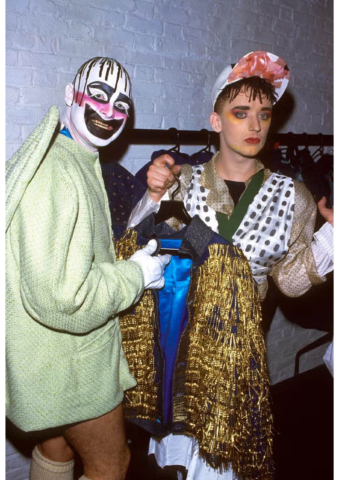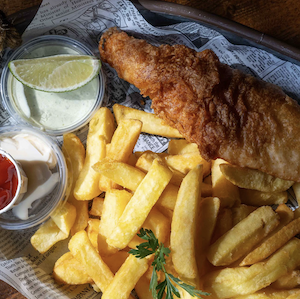Vamp: Literature x Members-Only
By Catarina Wilk
What comes to your mind when thinking of a Vamp or a so-called femme fatale?
Magic. Mysterious. Demoniac. Dangerous. Almost supernatural. Vampy. C’est une femme fatale! Whereas opinions, perceptions and ideas might differ, however one thing is certain. People are fascinated by this specific type of women. Especially, the wonderful world of literature was and of course, still is extremely fascinating to many creatives and authors.
When literature meets delicious cocktails. That’s how you could briefly sum up The Society Club, an excellent place for those who like to enjoy quality drinks as well as having a read through a great selection of books.
Situated in vibrant Soho, The Society Club, is a private members club founded in 2011, which has recently opened a second location just off Brick Lane in Shoreditch.
„Whilst a members-only club from 6pm, throughout the day The Society Club operates as an independent and eclectic bookshop, stocking fashion, counter-culture, art and 20th century literature, including rare and out of print titles. In the evening members can relax with literary inspired cocktails, such as the Hemingway Daquiri, or take advantage of the events programme which offers a range of book launches, art exhibitions and film screenings.“

Cocktail Book © The Society Club

Shoreditch Venue © The Society Club
Twitter: @SocietyClubSoho
Instagram: @thesocietyclub
As our December theme ‘Vamp’ celebrates la femme fatale in various different ways this month, .Cent Magazine was lucky enough to get a chance to get in touch with The Society Club‘s founder and owner Babette Kulik in order to asked her about her top ten „books fictional, real and even a love letter that shows a glimpse into the life of a femme fatale or vamp. It is as much their own weaknesses to that of the mans weakness which determines the path chosen.“ – Babette Kulik
1.The Education of a French Model – Kiki’s memoirs
Originally published in Paris in 1929 with an introduction by Ernest Hemingway the book was banned in the States for over 20 years on grounds of immorality. This is the tell all memoir of Kiki de Montparnasse a prominent model, nightclub singer, actress and painter in Paris during the 1920s.
Kiki was friends to many which was probably the reason she was often found saying she never needed a room of her own. Nevertheless she inspired many an artist and writer, and for most of the 20’s was Man Ray’s lover and muse.
Her life was wild and debauched enjoying nothing better than in a night club dancing on tables, raising her skirt regardless of the presence of underwear or not.
‘If you ever tire of books written by present day lady writers, you have a book here written by a woman who was never a lady at any time.’ Ernest Hemingway
2. Martin Amies – London Fields
This strange but brilliant novel centres on the character of Nicola Six, a femme fatale who foresees the exact date and manner of her own death in a dream. Not knowing who the future ‘murderer’ might be, she manipulates three potential candidates, crook Keith Talent, rich banker Guy Clinch and terminally ill American author Samson Young into meeting at the Black Cross pub in west London’s Portobello Road for her impending death. A must read for anyone who lives in London.
3. Muriel Spark – The Hothouse by the East River
A dark but depressive Femme Famatale is Elsa Hazlitt. From the opening line of Muriel Spark’s novel, ‘If it were only true that all’s well that ends well, if it were only true’, the combination of Elsa’s restlessness and total disregard for the feelings of others, including her husband, Paul, and their two children, makes this an unsettling read. Elsa only seems to want to talk about her psychoanalyst – well, it is New York in the 1970s. She is an odd femme fatale but a highly toxic one, Elsa’s story is chilling.
4. Malevolent Muse: The Life of Alma Mahler
Of all the colourful figures on the twentieth-century European cultural scene, hardly anyone has provoked more polarity than Alma Schindler Mahler Gropius Werfel (1879 – 1964), mistress to a long succession of brilliant men and wife of three of the best known; including composer Gustav Mahler. Pathological cruelty, antisemitism, vanity and a sense that the world owed Alma Maria Schindler something in token for her brilliance and beauty were some of the traits her admirers and enemies alike recognised in Alma. She was essentially a fur coat to men.
5. Pauline Reage – Story of O
A French Scheherazade, Dominique Aury, journalist and editor wrote The Story of O not as a novel but as a letter to her lover, literary critic and philanderer Jean Paulhan, whom she felt was becoming tired of her ‘I wasn’t young, I wasn’t pretty… it was necessary to find other weapons. The physical side wasn’t enough. The weapons alas, were in the head.’ – Dominique Aury. O had the desired effect and their affair spanned 3 decades.
6. Tiger Woman – My Story by Betty May
Sex, drugs, knives and devil worship, the crazy story of 20s vamp Betty May. Originally published in 1929 by Duckworth this book was out of print for decades but has recently been put back into print.
Betty May was born an impoverished girl in Limehouse, but reinvented herself in London’s West End. Lover of the painter Augustus John and the sculptor Jason Epstein. It was Epstein in particular who introduced her to other members of the Bohemian set, which including the ‘Queen of Bohemia’ Nina Hamnette, prankster Horace de Vere Cole, heiress Nancy Cunard, painter William Orpen, Iris Tree and poet Ezra Pound. She became a regular at the Cafe Royal which before WWI was a very different place from the later Café Royal or even the one we know today. May described it as a real café with sawdust on the floor, ‘The lights, the mirrors, the red plush seats, the eccentrically dressed people, the coffee served in glasses, the pale cloudy absinthe, I felt as if I had strayed by accident into some miraculous Arabian palace-continuing. No duck ever took to water, no man to drink, as I to the Café Royal’.
7. Vladimir Nabokov – Laughter In The Dark
Nabokov’s original femme fatale. ‘Once upon a time there lived in Berlin, Germany, a man called Albinus. He was rich, respectable, happy; one day he abandoned his wife for the sake of a youthful mistress; he loved; was not loved; and his life ended in disaster.’
That succinct paragraph opens Laughter in the Dark before Vladimir Nabokov dutifully unfolds the spiralling downward fall of middle-aged art critic Albert Albinus and his gripping obsession with the 16-year-old Margot Peters. The novel was first published in Russian in 1932 under the far more captivating title Camera Obscura, and twenty-three years later Nabokov would tackle a similar theme of an older man with a young girl in the groundbreaking Lolita.
8. Ernest Hemingway – The Sun Also Rises
The novel, a roman à clef describing an anguished love affair between the expatriate American war veteran Jake Barnes and Lady Brett Ashley, a femme fatale representative in the writer’s mind of 1920s womanhood, is mostly located in Spain, Hemingway’s favourite country. Brett refuses to confine herself to one man, she becomes a destroyer of men. Every man who desires her suffers from anxiety regarding his masculinity.
9. Simone de Beauvoir – Brigitte Bardot and the Lolita syndrome
Simone de Beauvoir’s essay written in 1960 in praise of Brigitte Bardot and her allure, soon after her breakthrough appearance in Et Dieu Créa la Femme. Simone de Beauvoir called Bardot the ‘locomotive of women’s history’, and compared her eruption into French society with existentialism, presenting Bardot as the first and most liberated woman of postwar France. Simone de Beauvoir wrote: ‘A liberated woman is the opposite of an easy and frivolous woman’. For her, Bardot’s sense of freedom was absolute, almost existential. ‘Bardot’s naturalness seems more perverse than any kind of sophistication. To despise as she does jewels, makeup and high heels is to refuse to transform oneself into an idol. It is to assert oneself the equal of men. It is to recognise that between men and women, there is only desire and mutual pleasure. This is precisely what made her appear so dangerous in the eyes of society’.
10. Louise Brooks – Lulu in Hollywood
This book is a collection of Brooks’s autobiographical essays together with an interview by Kenneth Tynan. It shows Louise Brooks as a fiercely independent character, as well as her failure as a social creature, because of her open critic of people’s false faces. But at what price? She survives as a kept woman by three lovers and ends in poverty, rejected and lonely. She characterises her work in Hollywood’s film factory as slavery and throws a shrill light on Hollywood’s morals (the casting couch) and cynicism: the end of the silent period served as an excuse to terminate all contracts. The all important feature of her life was sex, not love: ‘I have never been in love.’
The Society Club
12 Ingestre Place Soho,
London W1F 0JF
The Society Club
3 Cheshire Street Shoreditch,
London E2 6ED








